Belgian Grand Prix: Season restarts with classic circuit
- Published
The summer is over. It's time to get back to business. After a four-week break, the Formula 1 World Championship resumes this weekend at one of the sport's most iconic tracks as Spa Francorchamps hosts the Belgian Grand Prix.
The teams were forced into a mandatory two-week shutdown of their factories, allowing their staff a rest after a first half of the season that sent them from Australia, Malaysia and China to Europe, via Bahrain, with a quick trip over the Atlantic to Canada.
Now, the season continues with eight races in 14 weeks, taking in two more in Europe before heading to Singapore, Japan, Russia, USA, Brazil and finally Abu Dhabi, where double points will be awarded.
First up on the agenda, though, is Spa - a real test of man and machine with its sweeping curves, high speeds and undulating profile. This time last year, Sebastian Vettel won the race before remaining unbeaten in the final eight races of the season.
Can Lewis Hamilton or Nico Rosberg - the two Mercedes drivers battling for this year's world title - replicate that feat?
Or with Red Bull winning their second race of the year and the inter-team rivalry hotting up at Mercedes, will it be a battle right to the end?
We will get our first answer this weekend.
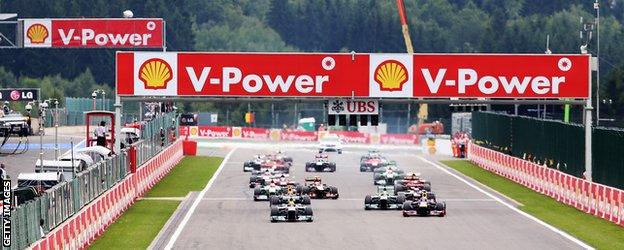
The last seven race victories in Belgium have been shared out between Red Bull, McLaren and Ferrari
Reasons to watch the Belgian Grand Prix
Hamilton will attempt to end his miserable run in qualifying - which extended to six races last time out in Hungary - to make his life much easier come Sunday afternoon.
His Mercedes team-mate Rosberg, meanwhile, will be eager to gain the upper hand and extend his championship lead after Hamilton refused to comply with team orders at the Hungaroring.
Over at Red Bull, the reigning world champions will have targeted a huge step forward in performance over the summer break, like they did last year to enable Vettel to win nine races in a row, and look to carry the momentum of Daniel Ricciardo's win in Hungary.
Ferrari, winner at Spa in three of the last seven years, could be in the mix for another podium following Fernando Alonso's superb drive to second in Hungary, while Williams will hope for a stronger showing after losing third in the constructors' to Ferrari after the last race.
Force India will simply hope their drivers do not crash into each other and McLaren will aim to make better strategic decisions, after their intermediate tyre gamble with Jenson Button backfired in Hungary.
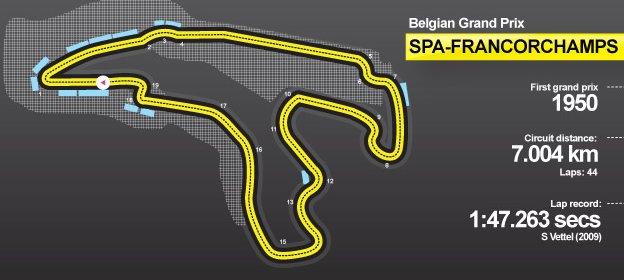
The 7.004km Spa Francorchamps circuit is the longest - and one of the fastest - on the calendar
What makes the Belgian Grand Prix different?
"One lap of Spa is like 20 at any other track, in terms of the excitement and adrenalin it generates," says Ferrari's Fernando Alonso. High praise from the double world champion and it is a sentiment shared by his rivals.
Nestled in the sumptuous Ardennes forest, the 7.004km circuit is the longest - and one of the fastest - on the calendar. It was first used for racing in 1922, with the track measuring 14km on public roads.
It was then cut down to its current length in 1979 but the drivers still record an average speed of over 140mph. Most importantly, the challenging Eau Rouge, Pouhon and Blanchimont corners remain.
BBC Sport chief F1 writer Andrew Benson |
|---|
"At a time when the Formula 1 calendar contains more and more bland modern autodromes, this majestic track in Belgium's Ardennes forests provides a link to the past, and an essence of what the sport is really about. "The modern Spa contains part of the terrifyingly fast original track that hosted Belgian Grands Prix from 1925 until 1970, when it fell off the schedule because it was considered too dangerous even for then. "The new version, while shortened, is still the longest on the calendar, and its character remains - a fast roller-coaster ride with a sequence of demanding, long corners that test man and machine to the very limit. "Here, just as at Suzuka, Monaco and Monza, drivers pay a penalty for mistakes, and the characteristics of the track mean they are inevitable. "It is a true high point of the year, and a perfect place to blow away the cobwebs at the start of the second half of the season after the summer break." |
Setting up the cars is tricky with the fast sectors one and three requiring low downforce, while the middle sector is all about high downforce.
Generally, an aerodynamically efficient car excels on the track, which bodes well for Red Bull, who have won two of the last three races at Spa.
The weather usually plays a major role in the weekend's action and with the circuit's large spread, it's not unusual to see half the circuit wet and the other half dry.
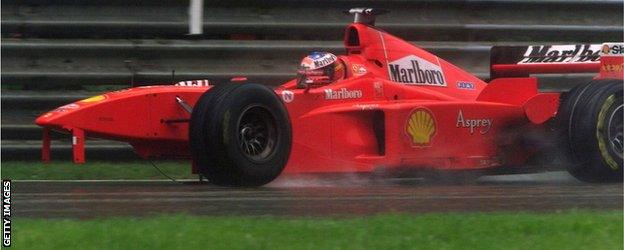
Michael Schumacher famously crashed into the back of David Coulthard at the 1998 Belgian Grand Prix
A classic Belgian Grand Prix
Spa Francorchamps has held some truly dramatic races, but few have been as remarkable as the 1998 Belgian Grand Prix.
In the pouring rain at the start, David Coulthard spun his McLaren on the hill down from the first corner which started a chain reaction that saw 13 drivers collide in a pile-up that left a mass of Formula 1 car pieces strewn across the race track.
With the track blocked, the race was stopped and not restarted for an hour.
Coulthard's afternoon went from bad to worse at the restart when he collided with Alexander Wurz, dropping him to the back of the field. His McLaren team-mate, meanwhile, spun in a similar place to Coulthard and was hit by Johnny Herbert's Sauber.
Damon Hill was leading the race in the Jordan, but was passed by Michael Schumacher. The German built up a lead of 30 seconds but then crashed into the back of Coulthard, who he was lapping, as the Scot was unsighted in the spray.
Schumacher, seething at this point, marched down the pitlane to the McLaren garage after bringing his three-wheeled Ferrari back to the pits and had to be restrained from launching himself into Coulthard.
Back on track, Hill was now back in the lead, with team-mate Ralf Schumacher second. The German was told to hold station and they crossed the line first and second to give Eddie Jordan his first victory as a constructor.
- Published27 July 2014
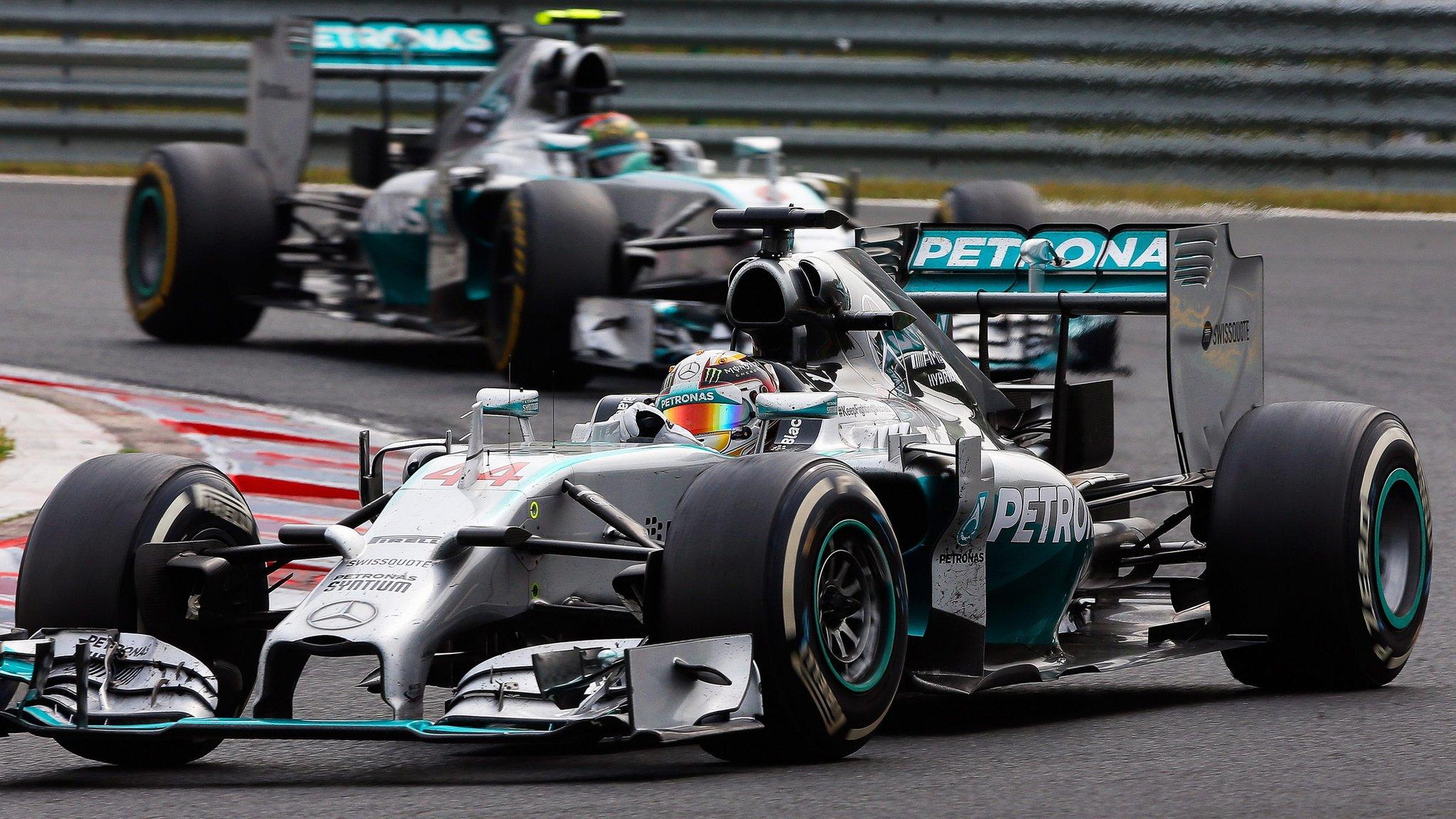
- Published26 July 2014
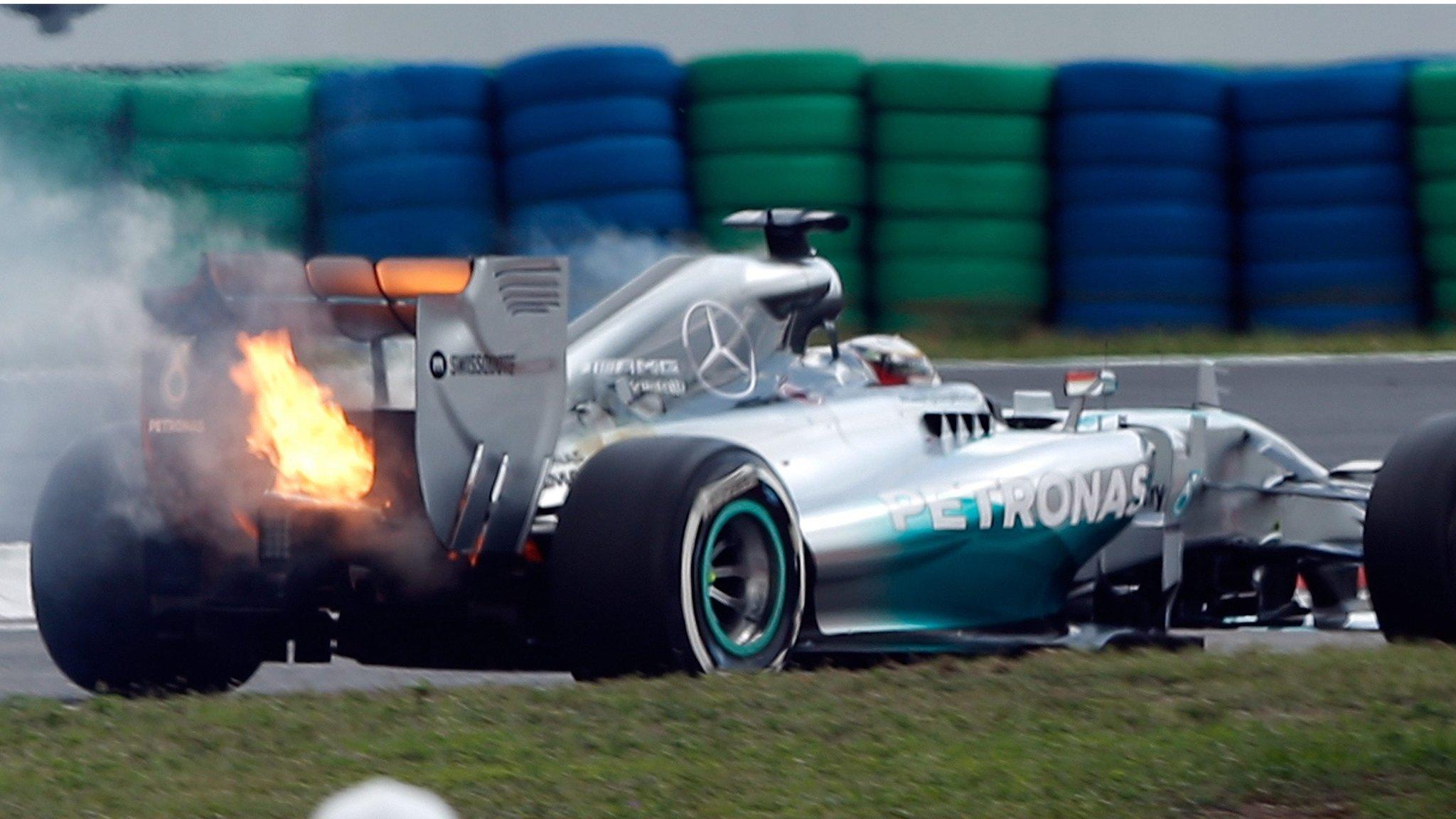
- Published26 February 2019
